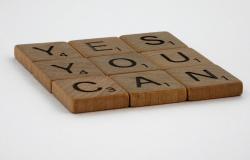
What does the archaeologist do? He digs, searches and finds; but how does he work every day? What does an archaeological excavation area really look like?
We went to find out directly in the field, a Calvatone. Because if the emotion of a discovery is certainly exciting and intriguing, before getting there the archaeologist must spend hours and hours, day after day with his back bent and his knees on the ground digging, moving earth and delicately rummaging among the shards that finds. From the bulldozer, through the shovel and wheelbarrow to the brush, to increasingly refine the research, arriving at a technique that is not an exaggeration to define as surgical, given that the instrumentation even includes the use of scalpels for the most delicate operations.
But let’s go back to our archaeological site: we are in the countryside near Calvatone, precisely in the Sant’Andrea area. You can only get there if you know it, via a dirt road accompanied by fields of poppies and ripe wheat. Two sharp bends in the countryside which in past centuries was dominated by the bed of the Oglio river (which today flows a few kilometers further north) and we enter right inside the archaeological area.
We distinguish it from the rest of the countryside – which here is not flat but moves up and down between dunes and depressions, designed precisely by the river that flowed here in ancient times – we distinguish it, as we said, by the presence of a metal fence that it delimits it and from the tops of the white gazebos that emerge above the vegetation and bushes.
Let’s start the journey into the past
Get ready because it will be a long and exciting journey.
So let’s get into it holy of holies of local archaeology, in the places that – something like two thousand years ago – were ancient vicus Of Bredriacuma small town born on the Roman colony founded in 2nd century BC. right next to the original route of Via Postumia. And of which today traces of ancient walls, old streets and an infinite quantity of fragments, finds, shards and testimonies of ancient life in this ‘vicus’.
Bedriacum in fact it was one of the many inhabited and commercial centers that usually arose alongside the main communication routes and here there was both the main consular road (the Postumia precisely) and a bend in the Oglio river, which in turn directly connected with the Po, another fundamental route for transporting goods. A more than strategic point to guarantee the long-term vitality of this centre. So much so that the stratification of the excavations has yielded finds that can be dated from the 2nd century BC to the 4th-5th century AD
What do these stones and shards tell us?
In Sant’Andrea the archaeological excavations today are carried out by the University of Milan: the students here have the direct experience of field research.
First of all, the area is divided into areas, delimited by pickets; the bulldozers move the first 30 centimeters of soil, the layer where there are usually no longer any finds, being the most superficial and already disturbed over the years by agricultural vehicles.
Once this first layer has been removed, the physical work of excavating and excavating deeper and deeper into the area begins, with increasingly precise tools as one gets deeper into the heart of the matter: this is how bricks and layers of soil of different colors begin to emerge. and consistency, portions of cobbled streets, shards that can be more or less large. It’s the story that enjoys revealing itself little by little, centimeter by centimeter.
This is how a stretch of road that was used to lead carts with goods towards a warehouse created between two sand dunes created by the river is coming back to light: a perfect place for conserving and storing. On this road, slightly downhill, almost perfectly preserved under the ground, fragments of daily life also emerge such as buckles, pieces of amphora, metal parts: the road was very busy, many people and goods passed on their way to that warehouse (which had initially been identified as a stretch of porticoed street next to the Postumia, but which was actually a place used for storage).
A little further on, in another excavation, an old building is coming to light, a room actually, with a well attached. Here too, the finds speak and tell: first of all they tell us that this room has a different orientation compared to those previously discovered, a clue that leads us to suppose a later construction. Furthermore, the very bases of the walls attest that the room was originally larger and was then narrowed while the well probably also underwent adjustments compared to the original layout.
A head emerges from the ground: it is the goddess Victoria!
This is what the excavations look like today, but Bedriacum has always demonstrated its desire to return to the light after a long sleep under the veil of time. During ploughing, the soil here has always been generous with more or less important finds, from simple pebbles and shards, to the most sensational discoveries.
In fact, here, almost a century ago, a bronze statue of extraordinary value was brought to light, today known as ‘Victory‘. It came to light by chance, during the plowing of a field, when the farmers saw a bronze head of a woman rolling between the plowshares: it was not the first time that the earth returned fragments of the past during ploughing, but never something so sensational had emerged.
Little by little, the entire statue of the goddess ‘Victory’ was brought to light, dedicated to the emperors Marcus Aurelius and Lucius Verus, therefore dating back to the second half of the 2nd century BC. Today it is kept in the Hermitage Museum in St. Petersburg.
This was just the beginning, which gave way to other more in-depth excavations in what had become in all respects a point of great interest: a whole series of finds of inestimable value emerged.
Environments, mosaics, roads, wells, marbles came to light which, under the various layers of soil, had become as eternal as history.
For those wishing to visit the excavation site in person, they will be able to do so on June 19th and 26th (full information here) during the free days organized by the Visitros Center Bedriacum-Calvatone in collaboration with the Archaeological Museum of Cremonathe Department of Cultural and Environmental Heritage ofUniversity of Milan and the Municipality of Calvatone.





